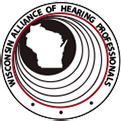Bartenders have reported auditory and vocal issues, including hoarseness, discomfort, and higher effort when speaking in the face of high-level ambient noise.
Workers in a variety of industries make use of the human voice. The way a voice is utilized and how much it is used is characterized as the vocal “load” on the voice mechanism (Larynx) (Koufman & Isaacon, 1991).
Table of Contents
Recommended Exposure Limit (REL) for Bartenders
The recommended exposure limit (REL) for employees is 85 dBA time-weighted average, or 100 percent noise dosage, according to the National Institute for Occupational Safety and Health (NIOSH). An individual’s noise exposure builds throughout the day, and if it consistently surpasses 100 percent dosage, hearing impairment may occur.
While working as a bartender, average sound levels varied from 73.8 to 83.6 decibels (dBA) (Pursley & Saunders, 2016). Full-shift noise exposure for waitresses and bartenders averaged 79 decibels (4 decibels), with 6.1 percent surpassing the NIOSH 85 decibel recommended decibel limit (Green & Anthony, 2015).
Sound levels in the restaurant area have been measured to be over 90 dBA with peak values of 124 dB. To interact with clients, bartenders must talk over the din of the environment perhaps putting them at danger for both vocal and hearing impairment.
Noise Exposure and Auditory Damage Among Bartenders
Noise Exposure and Hearing Loss According to the National Institute on Deafness and Other Communication Disorders (NIDCD), about 15% of Americans aged 20 to 69 suffer high-frequency hearing loss as a result of loud noise exposure at work or during non-work activities.
According to the Occupational Safety and Health Administration (OSHA), 7.9 million manufacturing employees in the United States were exposed to daily noise levels of at least 80 decibels (dBA) in 1981. Each year, the National Institute of Occupational Safety and Health estimates that more than 22 million people are exposed to noise levels above 85 decibels.
Waitresses and bartenders, for example, are members of this occupational category, and as the result, those exceeding daily noise levels can lead to noise-induced hearing loss.
What is Noise-Induced Hearing Loss?
Every day, we are exposed to sound in our surroundings, such as television and radio broadcasts, home appliances, and traffic. These noises are normally at safe levels that do not harm our hearing. Sounds, on the other hand, can be hazardous if they are extremely loud, even if just for a short period, or if they are both loud and long-lasting. These noises can harm delicate inner ear tissues, resulting in noise-induced hearing loss (NIHL).
NIHL might be visible right away or take a long time to manifest. It might be temporary or permanent, and one or both ears may be affected. Even if you aren’t aware that you are causing damage to your hearing, you may experience difficulties in the future, such as being unable to understand others when they speak, particularly on the phone or in a noisy environment.
Types of Noise-Induced Hearing Loss
1. Temporary NIHL
When a person is exposed to a sudden, extraordinarily loud noise, such as a gunshot, explosion, or fireworks show, temporary noise-induced hearing loss develops. Loud music during a rock event might also induce it. Muffled hearing, dizziness, and earache are all possible symptoms.
Symptoms might last anywhere from a few hours to many days. While the hearing will most likely recover to normal, the impairment will almost always be irreversible. Hearing loss can be both quick and permanent in some situations. If you are often exposed to these noises, you will get some form of irreversible hearing loss.
2. Long-term NIHL
Long-term noise-induced hearing loss occurs when a person is continuously exposed to loud noises for an extended length of time. Long-term NIHL is frequently caused by working in a loud setting. Manufacturing, music, mining, transportation, railway, and construction are some of the industries where personnel report long-term NIHL.
However, leisure activities such as snowmobiling, lawn mowing, handicrafts, and even blow drying hair might trigger NIHL in the long run. Symptoms of long-term hearing loss occur gradually. In a restaurant or public venue with a lot of background noise, sounds may be muted or a person may have difficulty hearing.
How To Avoid Noise-Induced Hearing Loss?
There is no need for workers to lose their hearing at work, and there are steps that may be done to avoid NIHL. It can be avoided by employing one or more of the following strategies:
- Noise control – turn down the levels of noise
- Administrative control – walk away, change work tasks, minimize exposure duration.
- Usage of hearing protection – if an individual’s occupational exposure reaches 85 dBA TWA, hearing protection should be installed and worn.
There are hearing protectors designed particularly for employees who are exposed to excessive noise levels on the job while simultaneously needing to communicate. these are known as “Flatattenuation” hearing protectors (Casali & Berger, 2010).
Vocal Effort Among Bartenders
The fundamental frequency, type, and loudness of phonation, as well as the vibratory characteristics of the vocal folds and the external frame of the larynx, are all affected by vocal loading, which is a combination of prolonged voice use and additional loading factors (e.g. background noise, acoustics, air quality) (Vilkman, 2004).
The amount of time an individual utilizes their voice is referred to as vocal load. “Vocal effort” refers to the amount of effort expended during vocalization. The vocal load rises with increased vocal exertion over time. Vocalizing at higher intensities for longer periods of time results in a higher vocal load and, as a result, increases the stress on the vocal folds.
When we want to know if we’re being heard/understood, we tend to raise the volume of our voices when the noise level around us rises. In the presence of noise, the Lombard Effect explains the propensity for speakers to increase pitch, intensity, and duration (Patel & Schell, 2008).
Lombard Effect: What Is It?
Speakers’ automatic vocal responses to background noise are known as the Lombard effect. This phenomenon has undoubtedly grown in relevance in the century since its discovery, well beyond what its discoverer could have envisaged.
The Lombard effect, in its most basic form, is a rise in voice volume in response to increased background noise. We all know it, even though most people aren’t conscious of it – just think of the last time you attempted to have a discussion in a noisy pub or at a rowdy party.
Although the involuntary adjustment of voice volume occurs when background noise levels vary, this is not a true reflex. The fundamental circuits responsible for the Lombard effect are found in the brainstem. The most plausible possibilities for the integration of vocal production and auditory perception required for the Lombard effect are groups of audio-vocal neurons in the periolivary area and the pontine reticular formation.
About Hearing Loss Workers Compensation Benefits
The Workers Compensation Program was established in 1911 to encourage employers to make the workplace safer by requiring safety programs and the use of safety devices. Since 1911, there have been over 2.5 million workers’ compensation claims filed. Hearing loss workers’ compensation claims now rank #3 in the number of occupational diseases claims filed.
Hearing loss workers’ compensation benefits are largely undiscovered benefits covering hearing health care, which is often uninsured. Many health insurance policies and programs like Medicare do not cover hearing aid purchases but workers’ compensation can. It also pays for the disability of hearing loss just as it does for the loss of eyesight or other injuries.
Aging populations, advances in technology, and greater sensitivity to hearing loss are bringing more attention to financing hearing health care. For the most part, those who qualify for hearing loss workers’ compensation benefits are retired hearing-impaired workers who live on fixed incomes.
Always feel free to ask Johnson Law Offices about the process, the law, or an individual case. The legal, medical, and audio-metric questions that come into play in a hearing loss workers’ compensation claim can be complicated.
The claims require attention to detail mixed with an ability to work well with hearing-impaired retirees and their families, especially spouses, and their hearing health care professionals.
Sources
- https://digscholarship.unco.edu/cgi/viewcontent.cgi?article=1234&context=urj
- https://www.cell.com/current-biology/pdf/S0960-9822(11)00648-8.pdf
- https://www.protectear.com/us/blog/2012/04/23/types-of-noise-induced-hearing-problems/
Contact Us
If you, or anyone you know, worked in noise and suffers from hearing loss, please do not hesitate to contact us.
Contact Us


